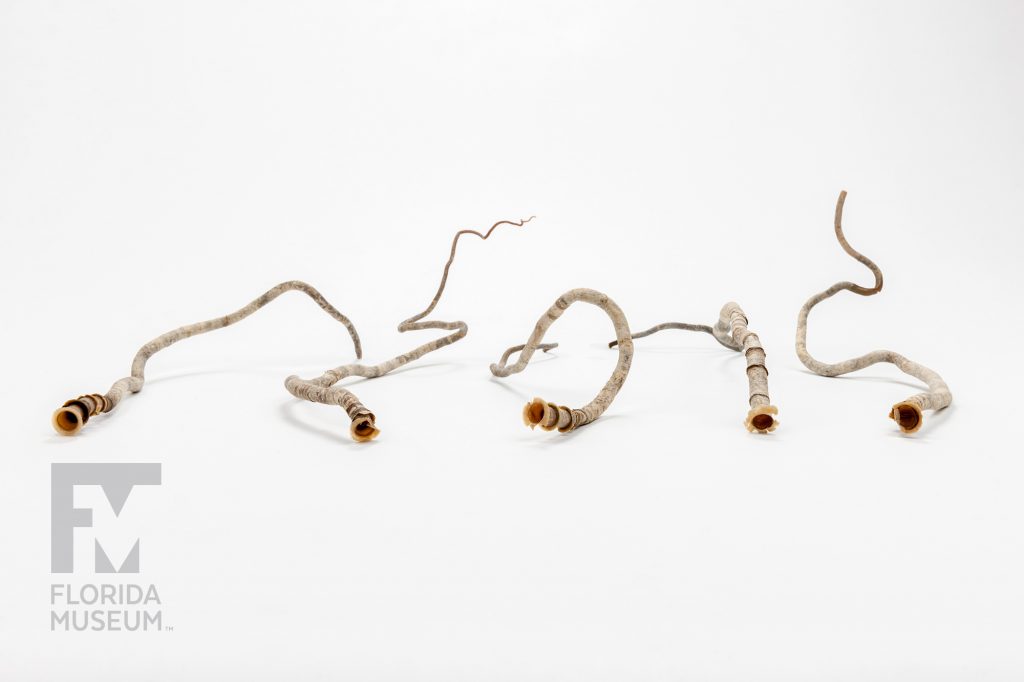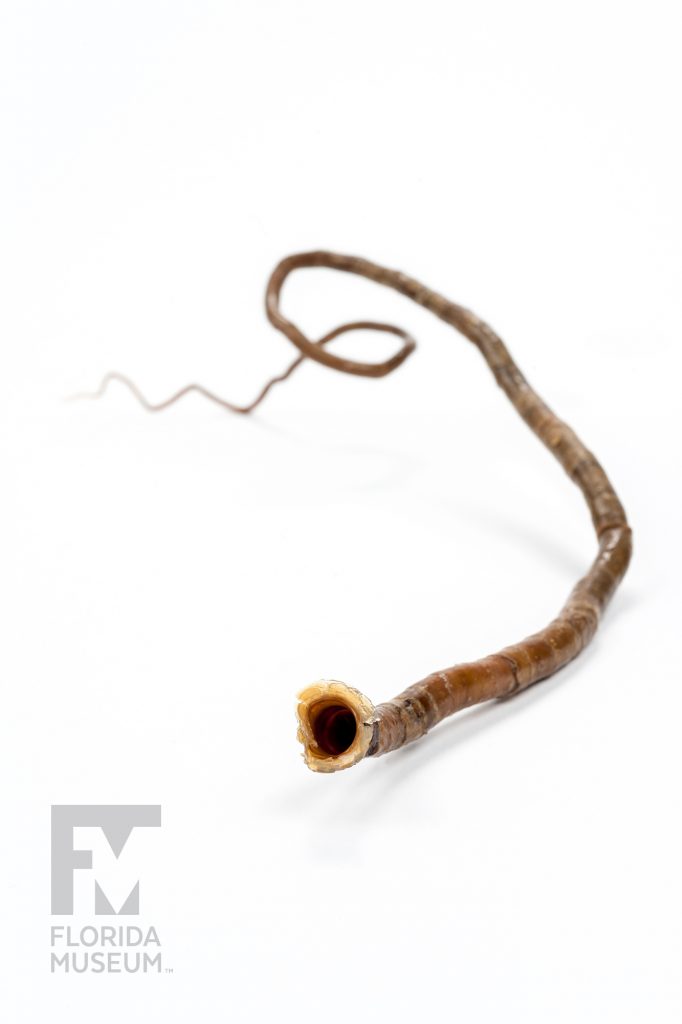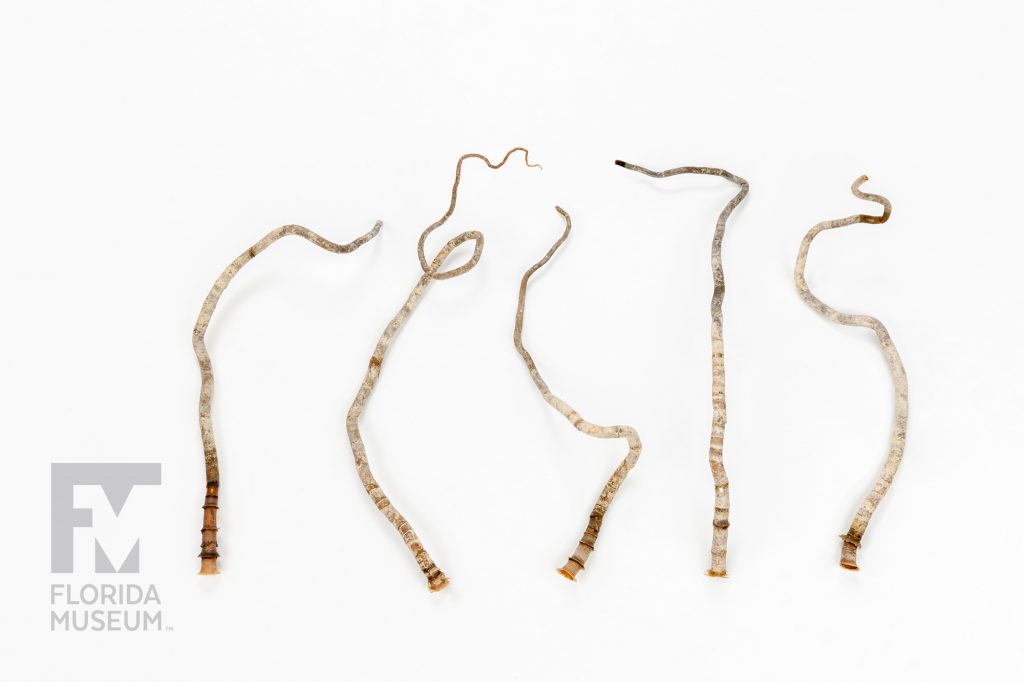Giant Seep Worms live near deep-sea cold seeps where hydrocarbons leak from the sea floor. These worms lack a gut and get all of their nutrition from a symbiotic relationship with internal bacteria, which can use sulfides to generate energy.
Summary
Giant Seep Worms (Lamellibrachia luymesi)
From Gulf of Mexico, 1975
Collection
Story
When Giant Seep Worms were discovered in the late 1960s, they were unlike any animals researchers had encountered, and they were classified in a new phylum called Vestimentifera. More recently, researchers have discovered that these bizarre worms belong to the phylum Annelida, along with earthworms and their marine relatives.
As their common name suggests, they can be very large, reaching up to 10 feet long. Their tangled, curled tubes are found in mud surrounding deep-sea hydrocarbon seeps. There can be over 9,000 individuals in a single square meter, and these dense aggregations of tubes provide a foundational habitat for other organisms.
Unlike most annelids, Giant Seep Worms have no mouth or gut, and few segments. These worms obtain their nutrients entirely from bacteria living inside their bodies. The worms absorb sulfide through their roots buried in the hydrocarbon-rich sediment, and the bacteria use these sulfides to produce energy for their worm host in a process similar to the way plants obtain their energy from sunlight.
Because Giant Seep Worms are so long, they can reach the oxygen-rich waters above the sea floor with the gill structures on their head. Their bright red color in life comes from the hemoglobin in their blood, an oxygen-binding molecule that also gives our blood its red color.
These incredible worms are able to live in areas usually inhospitable to animals thanks to their symbiotic partnership with bacteria. Giant Seep Worms are found all over the world along continental margins where hydrocarbon seeps occur. Cold seeps are stable habitats, and Giant Seep Worms can have very long life spans, growing to 2 meters long over 170 to 250 years. This exceptionally long life span makes this species the longest-lived solitary marine invertebrate known.
Jenna Moore
Graduate Student, Invertebrate Zoology*
University of Florida
Read by:
Mandy Bemis
Assistant Collection Manager, Invertebrate Zoology*
Florida Museum of Natural History
Exhibit
On display Sept. 23, 2017-Jan. 7, 2018, Rare, Beautiful & Fascinating: 100 Years @FloridaMuseum celebrated the Museum’s rich history. Each Museum collection was asked to contribute its most interesting items and share the stories that make them special. Though the physical exhibit is closed, this companion website remains online, providing an opportunity to experience the Florida Museum’s most treasured specimens.
Exhibit Area: Objects Tell Stories
Theme: Surprising Biodiversity
 Want to see more? Explore more than 300 breathtaking color photos of plants, animals, fossils and cultural heritage materials from the Florida Museum of Natural History’s collections in the award-winning book All Things Beautiful available from the University Press of Florida.
Want to see more? Explore more than 300 breathtaking color photos of plants, animals, fossils and cultural heritage materials from the Florida Museum of Natural History’s collections in the award-winning book All Things Beautiful available from the University Press of Florida.
*This title was accurate at the time the exhibit was on display in 2017. Please visit the collection website to verify current staff and student information.



